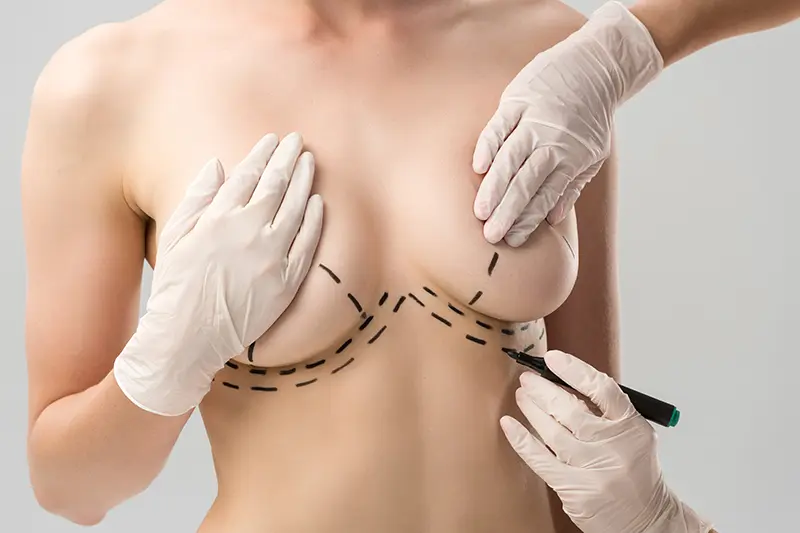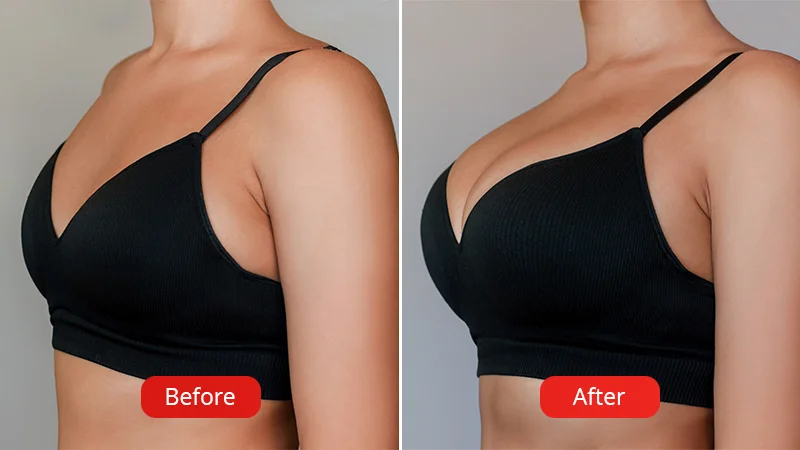Mastopexy (Breast Lift)
Redefine breast firmness and shape for a harmonious silhouette
Home » Plastic Surgery and Reconstructive Aesthetics » Mastopexy (breast lift)
Medical Procedures
Breast Surgery
Body Modeling
Facial Aesthetic Surgery
Cosmetic Procedures
Hand Surgery

Mastopexy, also known as a breast lift, is a cosmetic surgical procedure designed to correct sagging or drooping breasts by restoring a firmer, more youthful contour.
This procedure is ideal for women who wish to improve the position and shape of their breasts without significantly altering volume. In certain cases, mastopexy may be combined with breast augmentation or reduction for optimal results. At VenArt Clinic, our focus is on personalized treatment that delivers aesthetic balance and renewed self-confidence.
Book an Appointment
What Is a Mastopexy or Breast Lift?
Mastopexy involves lifting and reshaping breast tissue, along with repositioning the areola and nipple to a higher, natural position. Depending on the degree of ptosis (breast sagging) and your anatomy, the plastic surgeon will recommend the most suitable technique and incision type. The goal is to achieve a natural, aesthetic result while minimizing visible scarring. Each approach is customized to align with your unique body and aesthetic goals.
When Is Mastopexy Recommended?
- Breast ptosis (sagging): Common with aging, after pregnancy or breastfeeding, or following significant weight fluctuations.
- Loss of skin elasticity: Often caused by aging, sun exposure, smoking, or inadequate nutrition, leading to reduced firmness.
- Desire for reshaping: For patients satisfied with their breast volume but seeking a firmer, elevated appearance.

How Does the Initial Consultation for Mastopexy Go?
- Medical Evaluation: The plastic surgeon will assess your general health, medical history, and degree of ptosis. Breast ptosis is the downward displacement of the breast tissue and areola, with or without skin laxity.
- Expectation Discussion: You’ll discuss your desired outcomes and whether a simple mastopexy or a combined procedure is appropriate.
- Personalized Plan: The plastic surgeon will outline the optimal mastopexy technique, type of anesthesia, and incision placement based on your anatomy and goals.
Preparing for the Mastopexy Procedure
- Preoperative Testing: Blood work, breast ultrasound, or mammography may be required.
- Smoking Cessation: It is advised to stop smoking several weeks before surgery to promote optimal healing.
- Medication Adjustment: You may need to pause or adjust medications such as aspirin or anti-inflammatories under medical supervision.
- Postoperative Support: Ensure someone can assist you during your recovery at home.
How Is the Mastopexy Performed?
- Anesthesia: The procedure is performed under general anesthesia for maximum comfort.
- Incisions: The technique determines the incision type-around the areola, vertically, or in an anchor shape. Excess skin is removed, and tissue is reshaped.
- Areola Repositioning: The areola and nipple are elevated to a more youthful position while preserving sensation and blood supply. Areola diameter may also be reduced if necessary.
- Closure: Absorbable or removable sutures are used. Incisions are positioned discreetly for minimal visible scarring.
Recovery After Mastopexy
- Postoperative Monitoring: Patients are typically observed in the clinic for 12–24 hours.
- Common Symptoms: Swelling, bruising, and mild discomfort are normal and managed with prescribed medication.
- Support Bra: Wearing a specialized bra aids in healing and maintains breast support.
- Activity Resumption: Most return to desk-based work within 5–7 days; strenuous activities are resumed gradually based on medical advice.
- Scar Evolution: Scars fade over time, with individual healing rates varying.
Medical Team
Frequently Asked Questions
Who can benefit from mastopexy?
Women experiencing breast ptosis due to aging, pregnancy, weight loss, or breastfeeding.
Can mastopexy be combined with other procedures?
Yes, it may be combined with breast augmentation or reduction based on the patient’s needs.
Does mastopexy change breast size?
Not significantly. Its main purpose is to lift and reshape, not alter volume. For size changes, other procedures are recommended.
Is a special bra required after surgery?
Yes, a compression bra supports healing and maintains the new breast position.
How long does mastopexy take?
The surgery typically lasts 2 to 3 hours depending on complexity.
Are the results permanent?
Results are long-lasting, though aging and lifestyle factors may influence breast shape over time.
How long will I stay in the hospital?
Most patients are discharged within 24 hours, based on postoperative progress.
When can I return to work?
Light activities may be resumed within 5–7 days. Complete recovery takes several weeks.
Will there be visible scars?
Scars are inevitable but placed discreetly. They will fade progressively over time.
Can I breastfeed after mastopexy
In most cases, yes. It depends on the technique and individual anatomy—consult your surgeon if you plan to have children.
Is mastopexy painful?
Mild to moderate discomfort is normal and managed effectively with medication.
What are the risks?
Like any surgery: infection, bleeding, asymmetry, unfavorable scarring, or temporary changes in nipple sensitivity.







